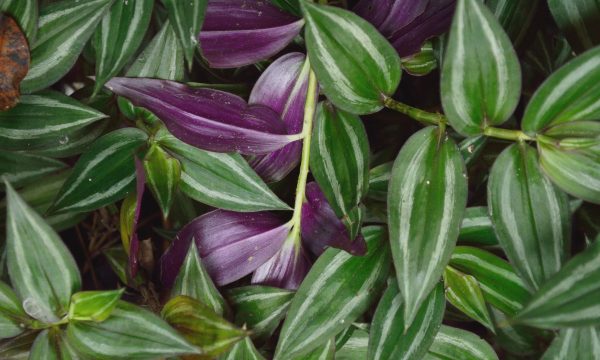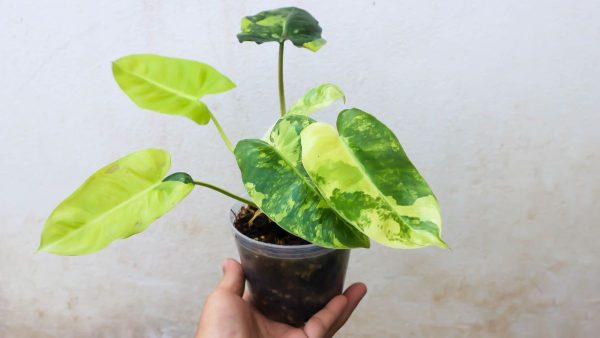Caladium is a visually striking, heat-loving, tropical plant known for its large, heart-shaped leaves exhibiting vibrant shades of red and other colors.
You will find contrasting green margins and veins with a little shade of pink too.
They can thrive or grow both in containers and landscapes.
But, growing them can be a little different and sometimes challenging too.
However, don’t worry here you’ll learn what mistakes to avoid while growing Caladium and complete a guide on how to grow them.
How to Grow Caladiums Successfully?
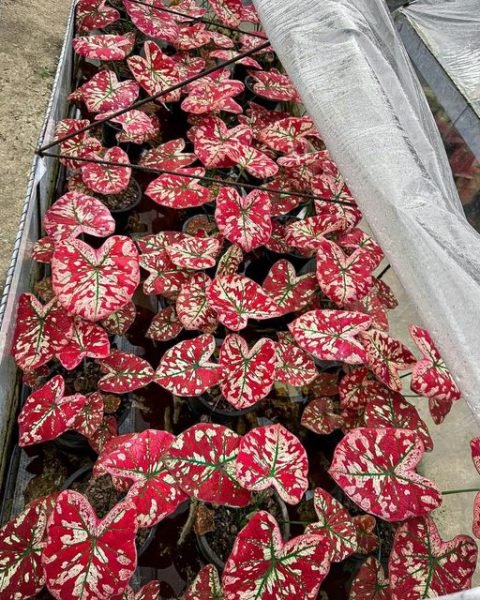
Propagating Caladium, or angel wings, is a straightforward process that can lead to a lush and vibrant garden display.
They have fancy and strap leaves.
Fancy ones can grow to up to a foot or even more each. These particular leaves are simply wider and thicker but they are not generally low-maintenance.
Caladium with strap leaves is significantly shorter and smaller than fancy leaves.
They are not wide but seem pointy and long.
Also, these particular leaves are cold and bear more heat.
But, it all depends on the methods and principles of successful propagation in the division of tubers.
As the new growing season begins, divide the clump of bulbs into smaller sections, ensuring each has at least one eye, which is the growth point for new plants.
To propagate your Caladium effectively, follow these steps:
- Wait for the spring season when the plant is entering its growth phase.
- Carefully divide the tubers, making sure each piece has at least one eye.
- Plant the divided tubers in soil that is rich, moist, and well-draining.
- Mix organic matter into the soil to mimic the plant’s native environment.
- Maintain a consistent watering schedule to keep the soil medium moist, not soggy.
Once planted, your Caladiums will require partial shade and should be kept in a location that mimics their native tropical wet climate.
But, they thrive better and grow rapidly with health if they are in tropical regions.
Now, not just tropical regions, the atmosphere, sunshine, and temperature should be warm and dry.
These Caladium plants can do generally well and decently from March to June.
5 Common Mistakes to Avoid When Growing Caladium
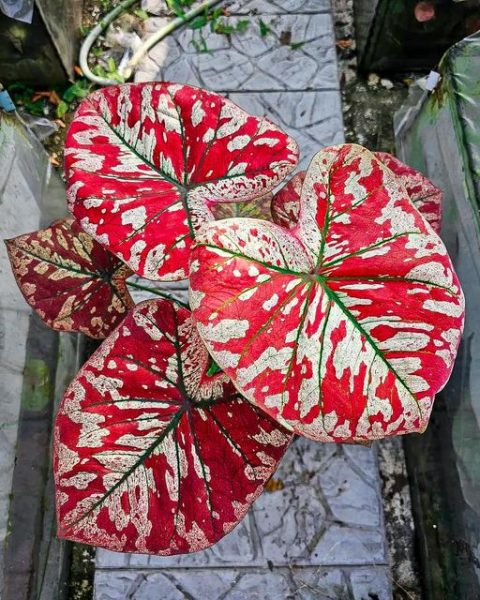
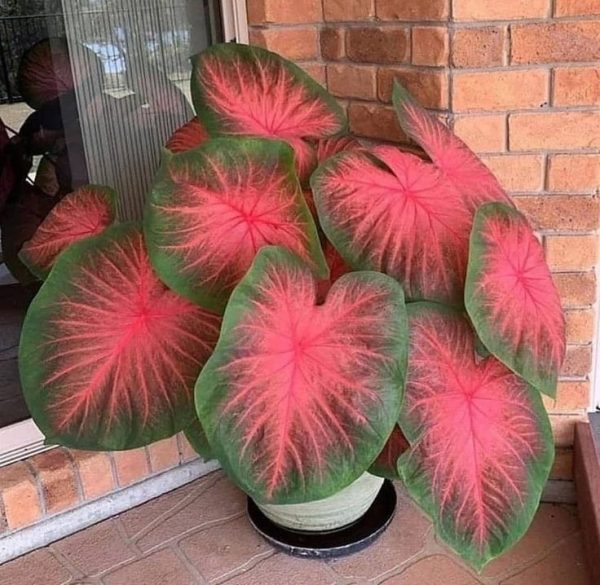
1. Check Soil Temperature
Ensuring the correct soil temperature is crucial for the successful growth of Caladium plants.
You might not do or be supposed to do it in other plants you grow.
But, it is a real thing and a matter which you should be addressing as soon as possible.
Because soil temperature affects tuber germination and root development in any plant, but primarily in a Caladium.
Don’t check the temperature after planting it, but before planting. You should wait until the soil temperature reaches at least 70°F, as Caladiums are sensitive to cooler soils.
Starting the tubers indoors can be a good strategy if outdoor conditions are not yet suitable.
Otherwise, outdoor growth is the most important and effective way to grow plants.
And, to help with this, you should try using a heat mat to get consistent bottom heat and encourage early growth. Remember, not all Caladium species will be open to it.
Once the soil has warmed up, you can transfer the plants outside but carefully.
The ideal time is when the soil is around 65 to 70 degrees at a depth of 4 inches.
60° can also work fine enough, but better let it be 65 or more degrees Fahrenheit.
You can make sure a few things or tips to ensure the right soil temperature:
- Use a soil thermometer to check the temperature at planting depth, the 4-inch.
- Start tubers indoors if outdoor temperatures are too low, otherwise outside.
- Get a heat mat to provide bottom heat and stimulate growth for growth-boosting.
2. Select The Right Light Conditions
Caladium works and grows proactively in filtered sunlight and partial shade.
You can use greenhouse shades but not colorful or darker ones. You can use nets too, but there are several ways of filtering the sunlight for an effective growth of caladium.
The point here is, that using these filters makes them ideal for brightening up less sunny areas of your garden or home.
Direct sunlight during the day can fade the vibrant foliage.
Morning light is gentle and can be beneficial, but care should be taken to shield the plants from harsh afternoon rays.
- Place the plant less than 3 feet from a window to ensure it receives enough light without being exposed to intense direct sunlight.
- South-facing windows are often the best source of light for Caladiums, providing the necessary brightness without the accompanying heat of direct sun exposure.
3. Plant The Tubers About 2-3 Inches Deep
Proper planting depth is crucial for the growing Caladium in tubers.
Plant each tuber 2 inches deep, ensuring that the ‘eyes’ or growth points are facing upward.
For the sprouting process, it can also be challenging to identify the eyes in varieties.
For the spacing between tubers, you should decide on the size of the tuber and the desired fullness of the plant display.
And, for a lush look, plant bulbs at a difference of 4 inches and space these groupings up to 18 inches apart.
Once you are done with it, cover the tubers with soil and water thoroughly. Maintain soil moisture, but be careful not to overwater because it will create trouble.
If everything is done right in this particular step, you should expect your Caladium foliage to emerge within eight weeks or appear as quickly as two to three weeks.
4. Over-Watering
Caladiums prefer moist soil but cannot tolerate waterlogged conditions and this is the point that most people, especially beginners may skip.
Not just for this particular Caladium plant, but also for several species.
Anyhow, over-watering will cause root rot and fungal diseases which we have already discussed with its impact.
Ensure the soil is well-draining and reduce watering frequency during cooler months when the plant’s growth slows down.
5. Ignoring Dormancy Period
Caladium goes through a dormancy period, usually in the cooler months when its leaves die back.
This step comes almost with any plant out there but it’s more common for tropical plants which prefer hot, humid, and dry atmospheres than usual.
A common mistake is continuing to water and treat the plant as if it were actively growing, which can lead to bulb rot.
During dormancy, reduce watering significantly and store the bulb in a cool, dry place until the next growing season. Otherwise, your boy will die. sadly.
What To Do If Not Growing?
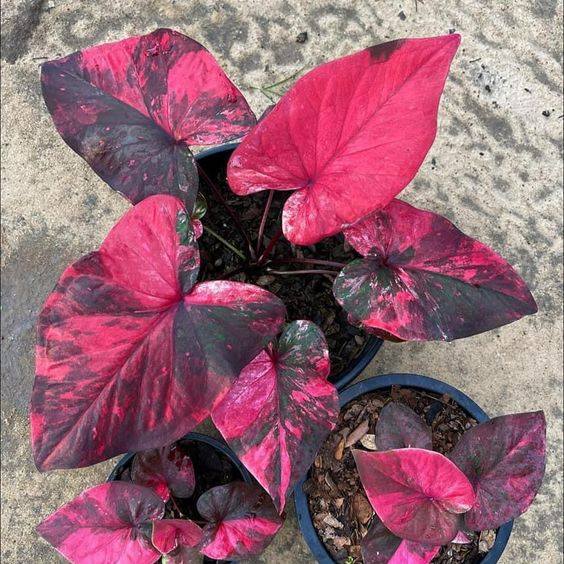
If you suspect your Caladium has root rot, act quickly. Because rot is a fungal disease to the roots of any plant it makes your plant go yellow and eventually die.
However, it’s preventable if you do the right job and take action.
First, stop watering immediately. Because there is no point in adding it in.
Instead, if you are overwatering, this is what rotting the root and spreading the fungus to kill good roots.
The next job is to carefully remove the plant from its pot and inspect the roots or study it in detail.
Study its colors and smell most importantly. If your roots are healthy, you should have a firm and white color on them while rotten roots will be mushy and brown.
Trim away any affected areas and report in fresh, well-draining soil.
It may also smell like decay and if you do, you should get rid of that plant or root and get a new and healthy root.
